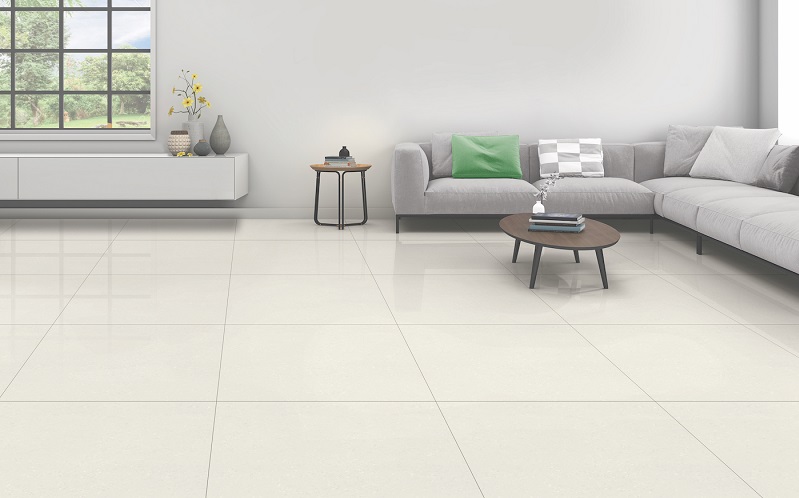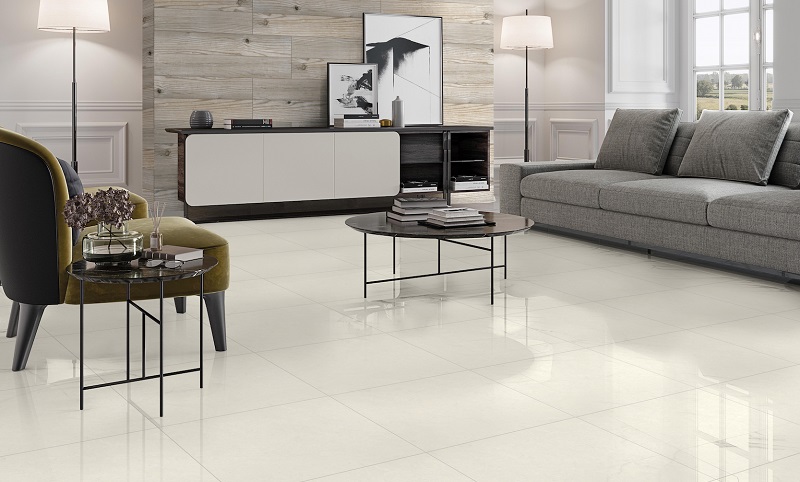
Q. How is the flooring industry faring for the commercial and residential sector?
Currently, the tile category is almost a ₹30,000 crore industry. Organized brands make up about 30% of the same and there is an opportunity to address customer friction-points and grow the branded sector. Ceramic tiles today have become an integral part of home improvement, and our customers understand that they make a huge difference in the way your apartments, offices and spaces can look. The flooring industry in India has been witnessing constant growth owing to several factors like a surge in consumer residential demand as well as consumer relevant innovations.
We have constantly invested in new technologies and specialised machinery to create innovations in designs, sizes and have met emerging consumer needs.
Q. There has been an influx of newer materials, technology, and specialized machinery. How has it impacted the brand image and sales?
Our approach has been to combine these newer materials or technology to offer consumer-relevant innovations. For instance, Cool Tiles decrease the indoor temperature by reflecting solar heat. Forever tiles are scratch resistance, and they wouldn’t get scratched even with a screwdriver. Germ-Free tiles resist microbial growth.
In the past couple of years, we have been going through a phase of technology investments in specialized machinery driving a steady increase in tile sizes. Today, tiles as large as 800×2400 mm are possible. Upwardly mobile customers want the beauty of marble & natural stone while still demanding the convenience of Vitrified Tiles. Our new ranges like Inspire are inspired by best stones from across the world. Infact, we recently launched Granalt that is an affordable & convenient alternative to Granite!
We are also investing in digital tools to make tile selection & visualisation easy. On our website, a shopper can try the tile before she buys to assure herself of the look before making the purchase. This greatly reinforces the trust our brand enjoys and gives us tailwind to our volume growth.

Q.Share with us the growth trends of the flooring industry have been similar to those of other segments in the construction industry?
Growth in flooring tiles have been fuelled by growth in commercial & residential real estate sectors. The same drivers have also been fuelling growth of adjacent segments like wall tiles or tiles for special applications like cool tiles, germ-free tiles.
As awareness of keeping public spaces free from germs & microbes have increased, Hospitals, Schools, Airports & Food Service have driven demand for Germ Free Tiles with anti-microbial properties.
The high temperatures in summer have driven demand for Cool Tiles to keep indoor temperatures cooler, especially in geographies where high temperatures prevail.
Q.Which factors are driving the trends in the flooring industry with strong emphasis on quality and adherence to strict deadlines?
Competitive pricing, great product quality & consumer relevant innovations are table stakes in the flooring category. We believe, that it’s important to remove friction points and make tiling easy for both B2B as well as B2C customers. So, we think of bouquet of services that make the product more accessible to all.
For example, tiling decisions are made only once in a few years. Hence, all are keen to get this right. Retail shoppers see tiles (chosen by them) on a quick & easy visualisation software at our channel partner. B2B customers get customised layouts from us at zero cost. By sharing the final look of their project, we ensure their choice is in line with their expectations.
For large projects our team trains masons in the art & science of laying Tiles. This explains simple but important practices like stacking tiles in the right way or following arrow marks while laying tiles. This ensures far superior results.
And it’s this approach of thinking of both the product & the service that drive our growth now and in the future.
Q. How is your brand ensuring quality, functionality, and long-term performance, all at competitive prices?
Ever since the company was established in 1977, even in the pre-liberalisation era in the context of licenses & quotas, Orientbell Tiles focused on quality. This emphasis on quality meant sales followed. This has built a strong organization-wide commitment to quality that stands us in good stead
In 2004, we got our first ISO 9001 & OHSAS. This was way ahead of the industry, reflecting our core beliefs of quality & employee safety.
This approach to quality has in fact helped us in identifying unproductive costs & continuously reducing them to give great quality at affordable prices.
Q. What trends in the Indian market have been instrumental for the growth of your brand?
We have seen that the consumers in the tile market have increasingly become tech savvy and are using technology to replace most of their offline purchasing hassles. Researching online for a product of their choice before they visit any of our channel partners has become an emerging trend.
We believe in providing accurate and transparent information about the products which helps us understand and meet the needs of the customers even before they reach our store. The latest OBL digital tools and technologies help customers
- find a similar-looking tile by just uploading a picture with Samelook;
- find the tile for their project by using filters of colour, or project location or by other specifications and combinations in a few seconds using Quicklook.
- get a personalised render of their chosen tiles in the project layout along with recommendations from the company’s own in-house designers using Trulook;
- upload a photo of the actual sample flat to virtually try as many floor tiles from the range as you want with Trialook.
All our next generation channel partners showcase customers exactly how a tile would look in their spaces which I feel is instrumental when we talk about creating a perfect user experience.
Q. How can policy initiatives have the potential to propel the growth of the Indian flooring market when India is emerging as a key global market for flooring products?
With the global supply chain being impacted due to the pandemic, India has the potential to emerge as a key country in the flooring market. India is a great contender for sourcing tiles and is on its way to become one of the biggest exporters of tiles internationally.
This is also an opportunity to addresses the several challenges that the industry has been facing and make a lasting impact. To explain:
- GST on Power & Fuel – Even after 2.5 years of GST rollout, power and fuel which is roughly 30-40% of the cost base for heavy industries is still outside the GST ambit resulting in cascading of taxes and thus higher costs for the end consumer.
- Input credit for the Real Estate Sector – Despite the welcome step of reduction in GST for the real estate sector last year, the absence of input credit mechanism for taxes paid against raw material supplies makes the entire system inefficient and may result in leakages for the exchequer. Availability of input credits should still make housing more affordable while arresting the potential malpractices.
- Addressing payment delays/defaults – Payment delays/defaults even from some of the larger construction houses/real estate developers are a norm impacting working capital cycles. While IBC is a great reform to take legal recourse against defaulting customers, enforcement is still lengthy, complicated, and costly. We would benefit from any additional steps to enforce payment disciplines and restore the lost trust.
Q. The future of the Indian flooring market.
20-30 years ago, tiles were small in size. Today tiles have become bigger. The speed of manufacturing has also increased. However, the way tiles are sold is just the same.
In the coming days, we are expecting consumers to increasingly demand a new shopping experience for tiles. They will research tiles online before they even visit a single store. Much like they do for their clothes (that last a much lesser time), they will expect to try tiles before they buy.
The trends are increasingly pointing towards creating a much more straightforward and uncomplicated user experience. The future of the flooring industry lies in advancements in tools and technologies not only on the production and manufacturing front, but also on the shopper experience front.



